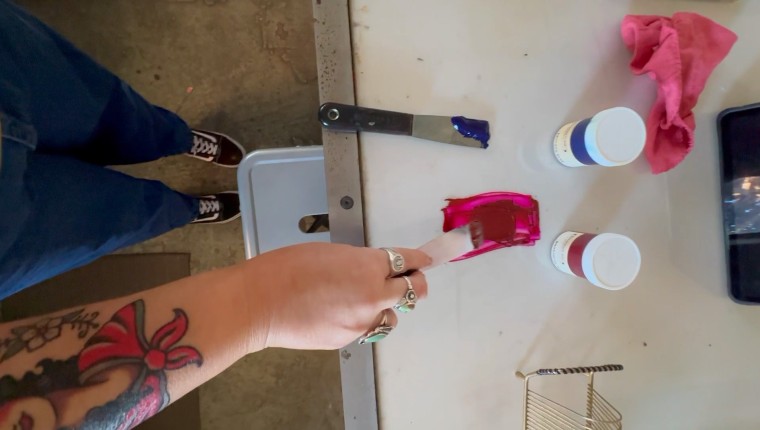that once existed only in my head
. . .
One of the things that keeps me coming back to Letterpress in my art practice is the way it engages my senses. When much of my day is spent looking at screens, the tactile nature of printing with a press is such a refreshing change of pace.
There is, of course, the print shop smell, wholly recognizable and indescribable. People who visit the shop often comment on it upon entering, with the same nostalgic enjoyment of smelling an old book.
The combination of metal and iron, ink and oil, breathes new life into me when I walk in. It truly never gets old.
The olfactory magic of the print shop puts me in a state of contemplation, where all concept of time is lost – and on those rare, good days, all of my worries and insecurities disappear in the dance.
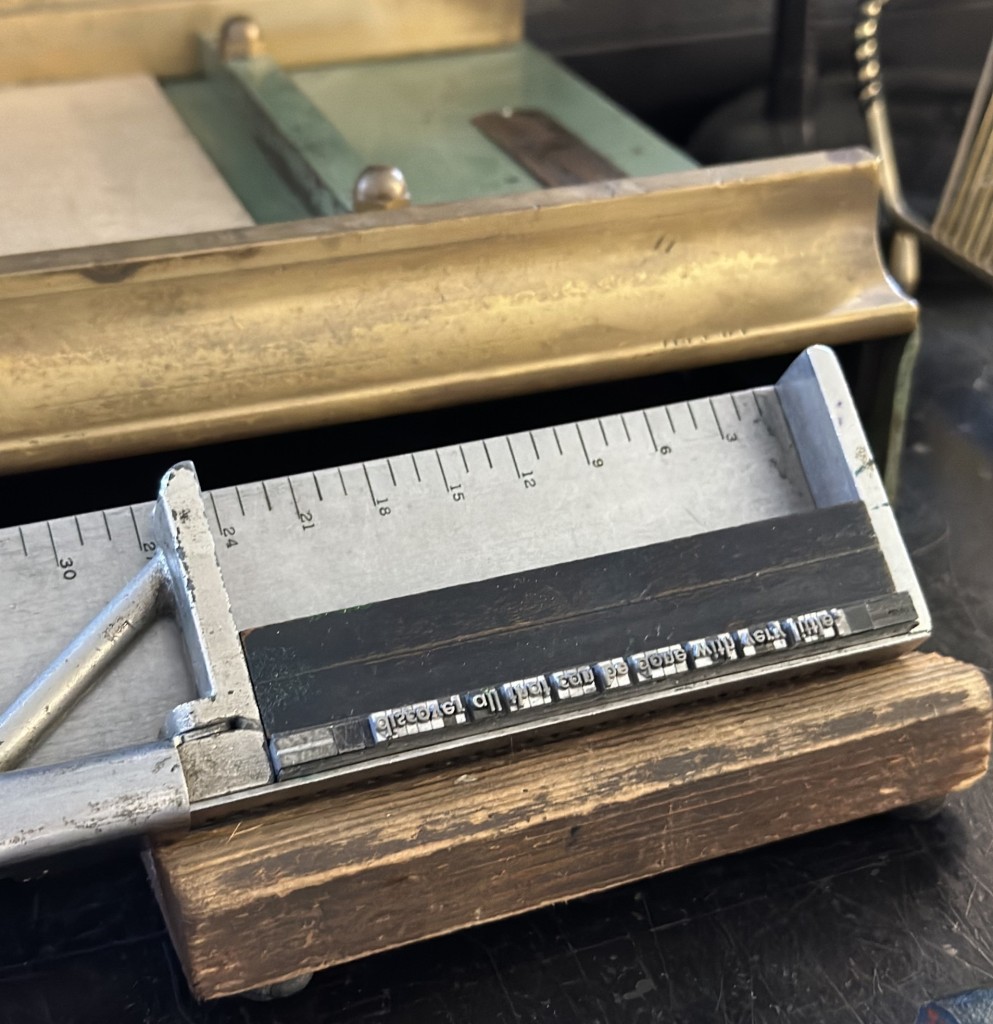
The laborious process of setting a line of type, locking it into the press, inking and printing, requires me to be fully present and engaged. Poet and printer Anaïs Nin describes how “The words which first appeared in my head, out of the air, take body. Each letter has a weight.
“I can weigh each word again, to see if it is the right one.”
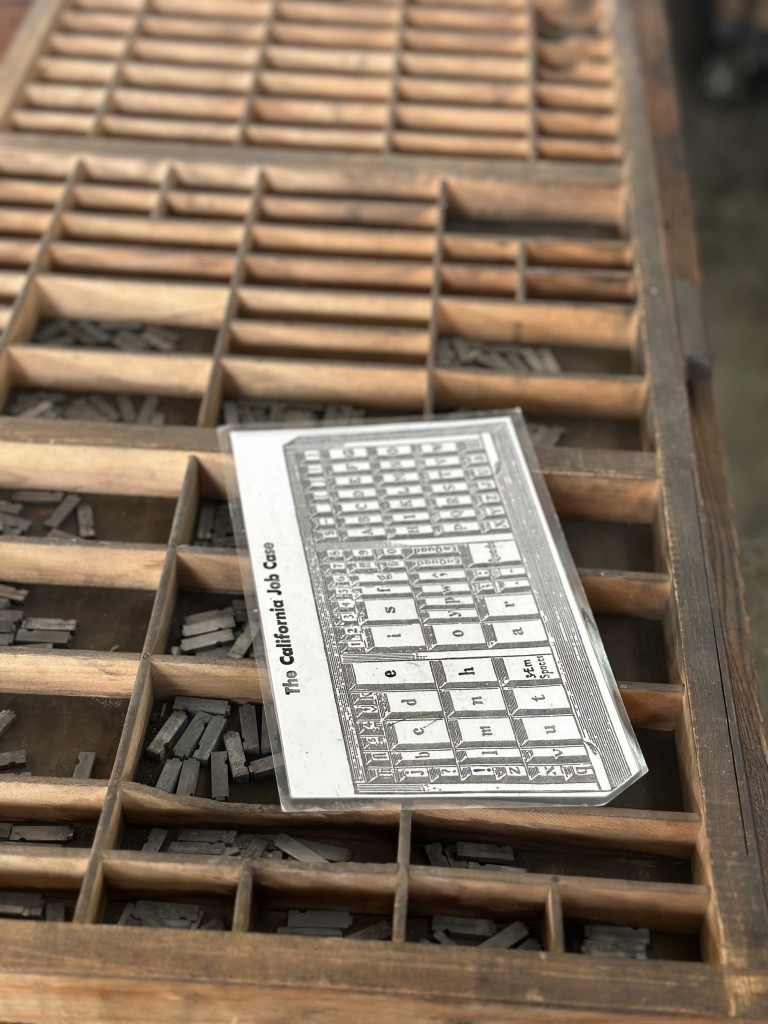
There is a physicality to my words cast in metal, composed letter by letter, line by line.
To hold in my hands the literal weight of the words that once existed only in my head now so concrete, I hope every writer and poet gets a chance to experience this magic.

Of course there is the tedious but rewarding process of hand-mixing ink.
Because letterpress ink is transparent, looks can be very deceiving. Adding just a tiny bead too much can majorly influence the finished product – changing the color entirely, or creating an over-saturation of ink that can only be resolved by cleaning all the rollers on the press and starting again.
When I’m mixing ink, I imagine I’m making candy. If it’s too drippy like chocolate syrup, I add a little magnesium carbonate to stiffen it until it thickens like frosting or paste. I look for the little ridges left from the knife to make sure of the proper consistency.
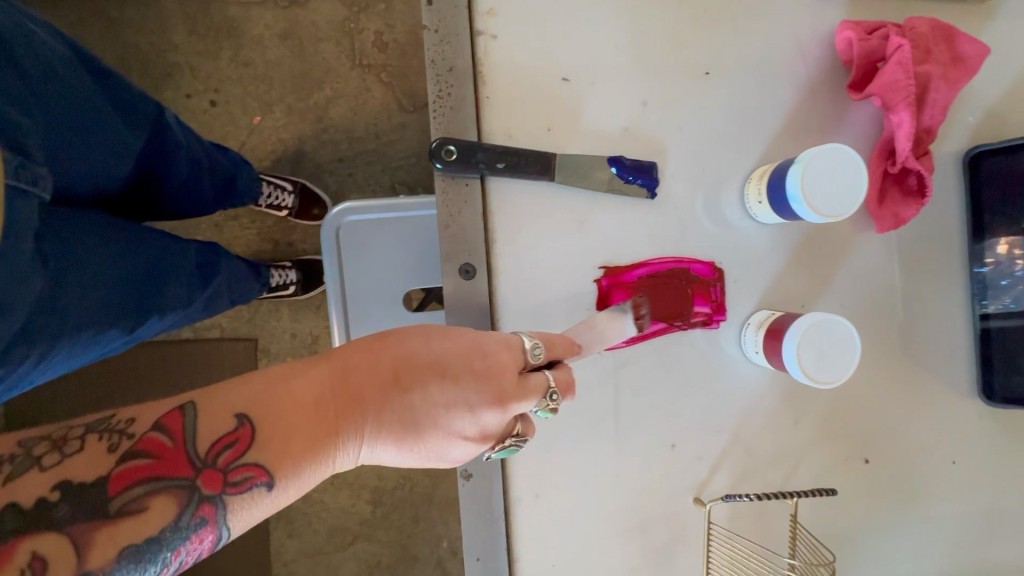
Printers often talk about the sound of the ink, how there’s a certain hisssss that confirms juuuust the right amount of ink has been laid down. I listen for the hiss before type kisses paper.
I run my finger over the page, feeling for the tactile imprint into the cotton.
I check the backside, making sure there is no punch through. There is a balance that has to be found, as too much impression can damage the type or blocks, and start to bite through the other side of the page.
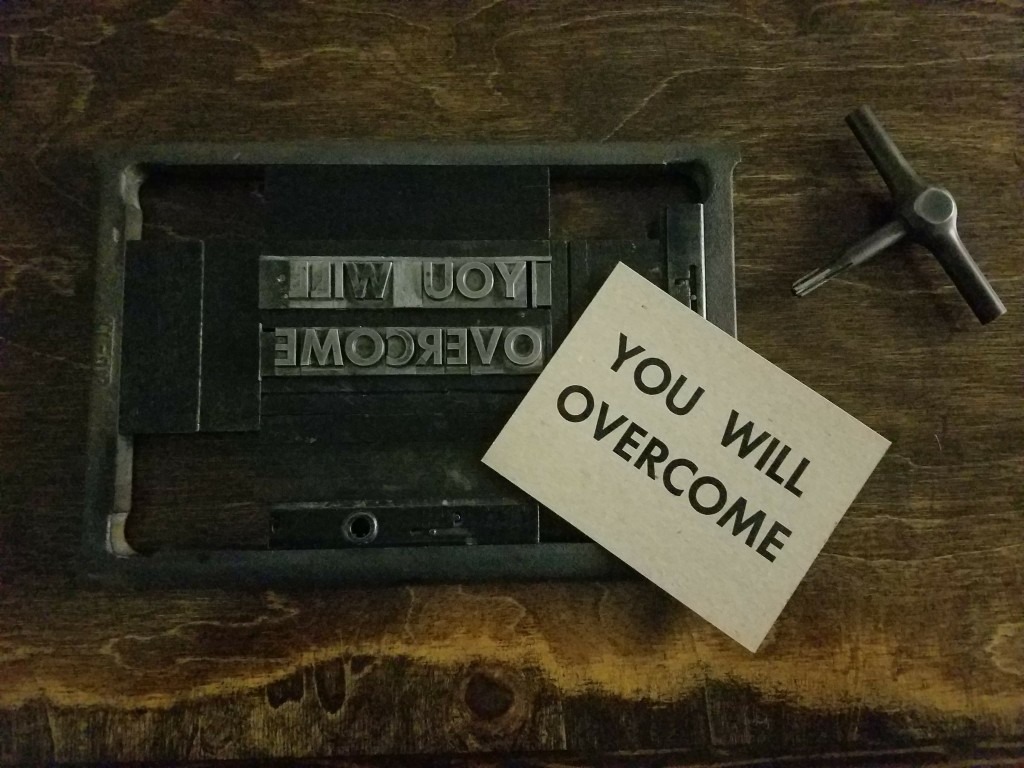
The actual printing is the easiest part of the process, and becomes almost meditative.
The clanking of metal, the low hiss of the rollers gliding across the inking disc – it’s in this cacophony of cast iron that I find a peaceful quietude. One print at a time.
Kaitlin Crockett received a 2023 Creative Pinellas Emerging Artist grant.
You can follow the updates she shares on her work here.
